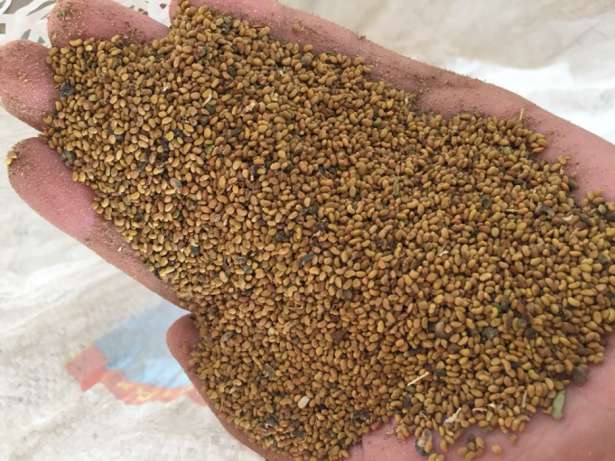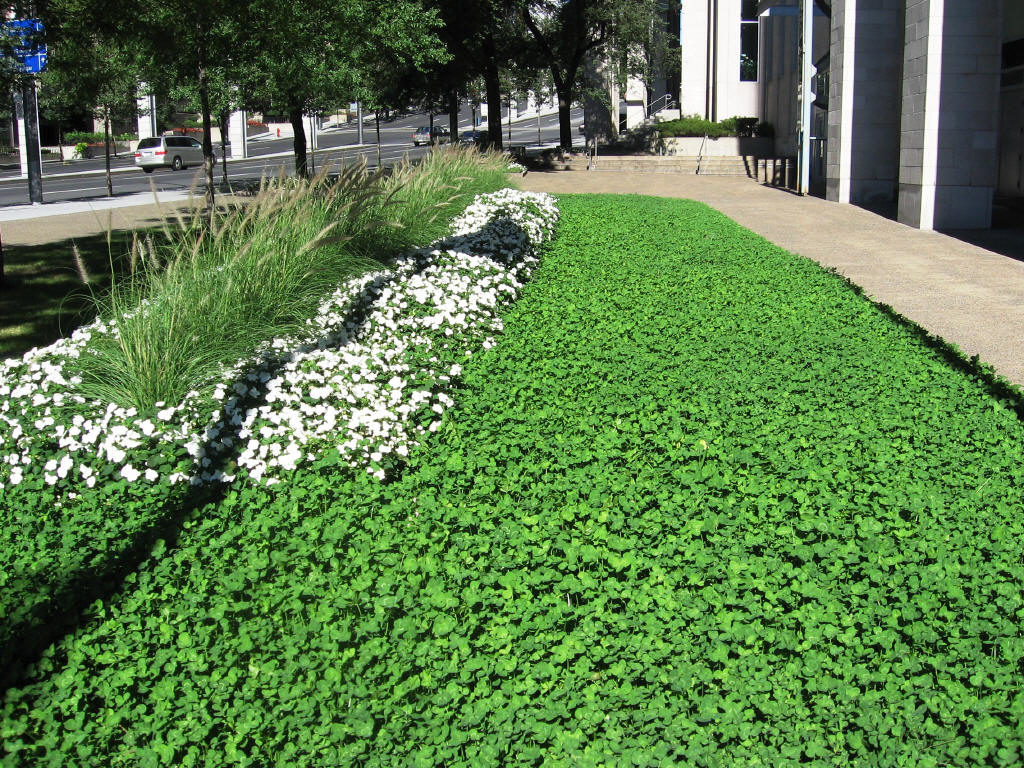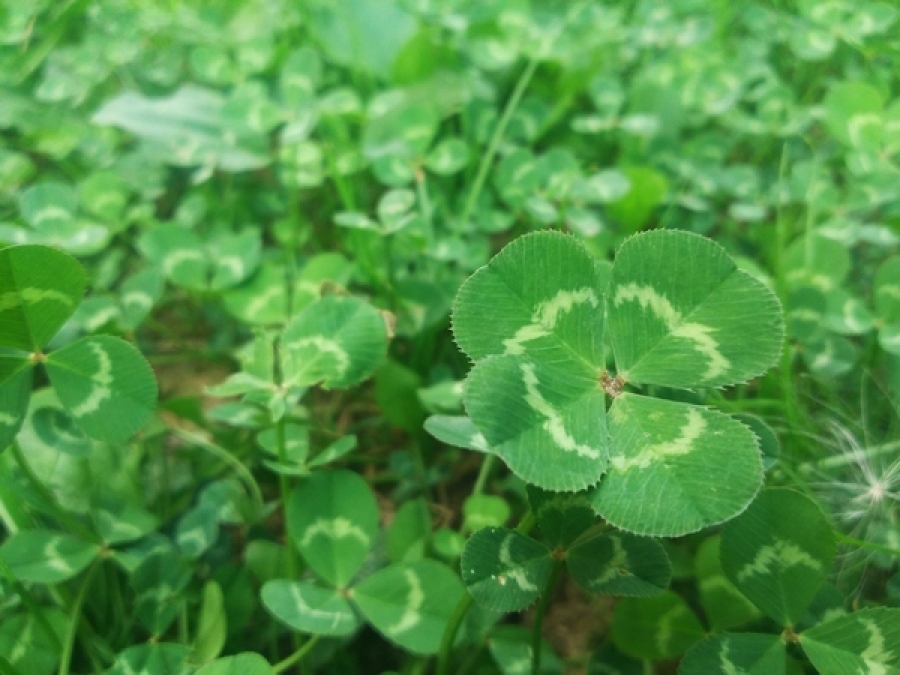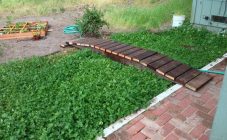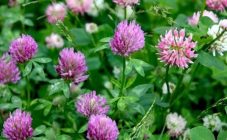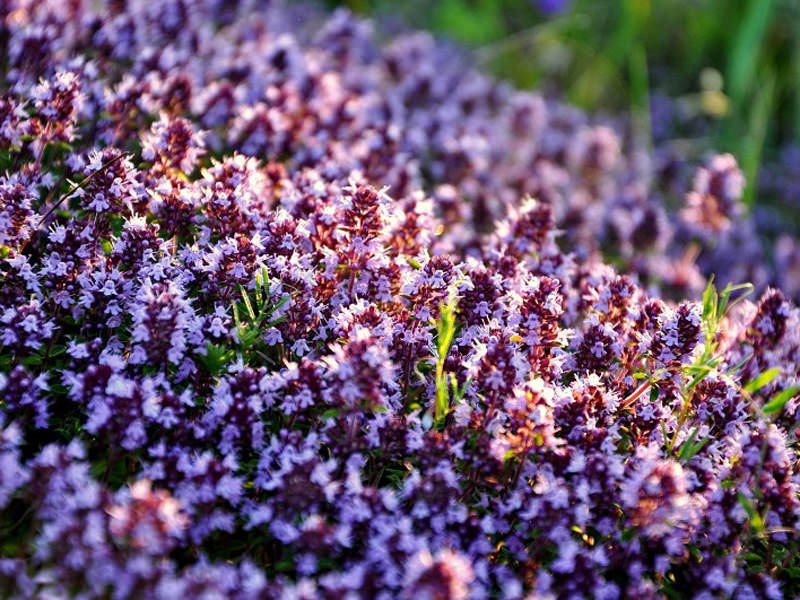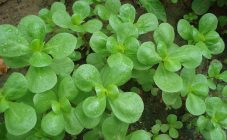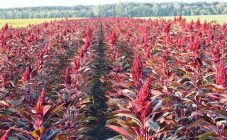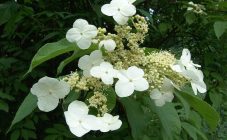Content:
Clover is a member of a large legume family. Externally, a herbaceous plant is a bushes, the root of which has the ability to capture nearby territories during the growing season and give young shoots. The stems are juicy, slightly pubescent, and the clover leaf usually has the same structure: three petals, occasionally four or more. The name translated from Latin means "trefoil" (Trifolium).
Clover bloom is quite long - it starts in mid-June and ends in August. Clover flower is an umbellate inflorescence, usually whitish-pinkish and up to lilac color. Each flower is like a tongue peeking out of an inflorescence. After pollination, a pod is formed, which contains 1-2 seeds.
In the wild, clover thickets are found on the territory of Russia, Ukraine and Belarus. Also found in Europe and North Africa. Selects moderately humid meadows, open forest glades, and also often grows along roadsides. In nature, there are about 250 varieties of clover, but only a few of them are artificially cultivated.
Types of clover
Among the numerous varieties that are widely found as decoration in flower beds, the following can be noted:
- Crimson (Trifolium incarnatum) is an annual herb with bright red inflorescences. The size of the heads reaches 7.5 cm in diameter. The usual flowering period is in July. The leaves are 4 cm in diameter and end in three dark green petals. Often sown as green manure. Under favorable conditions, the height of the bushes does not exceed 30 cm.
- Pale yellow (Trifolium ochroleucum) - stands out among the fellows by small (up to 3 cm in diameter) light yellow inflorescences. The flowering period is June-July. The leaves have long petioles (up to 15 cm), ending in three juicy green petals. Perennial grass in one place feels great up to 4 years. It grows in height up to 30 cm.
- Meadow (Trifolium pratense) is a semi-evergreen perennial with bright red-purple or pink inflorescences. The diameter of the flower heads does not exceed 2.5 cm. The flowering period is from the last decade of May to September. The leaves are dark green with a characteristic V-shaped pattern. Most often it is sown as a valuable forage crop or green manure. If the inflorescences are not removed, then it reproduces well by self-seeding. The bushes usually reach a height of 30 cm, and grow up to 60 cm wide.
- "Green Ice" is an ornamental variety with beautiful cream-colored inflorescences and three-leafed leaves, iridescent in several shades of green.
- "Susan Smith" - a variety with dark pink inflorescences, and showers have noticeable yellow streaks;
- Creeping (Trifolium repens) - famous for its white fragrant inflorescences up to 2.5 cm in diameter. The flowering period is from May to September. It is a semi-evergreen perennial. The creeping stems are covered with three-petal dark green leaves about 2 cm in diameter. The stems take root easily, which allows the plant to very quickly develop all adjacent territories. It usually reaches a height of only 15 cm, but during the season it grows in width by 60 cm.
- "Purpurascens" is a clover-like plant, but with unusual leaves with an atypical reddish-brown hue and a greenish border around the edge.
- "Purpurascens Quadrifolium" - differs from other varieties in leaves, which can have 4 or even more petals (5-leaf clover or even six-leaf clover).
What does a clover look like: a description of planting and care
A wild plant does not need weeding or feeding. If the clover is planted in the garden, then there it will not need complicated care. The vitality of the perennial is so high that it has become a saying. You will have to work only in order to get a living carpet with even and neat bushes. To do this, choose areas in the open sun or in partial shade. All types of cereals are excellent precursors for clover.
Before planting, the land under the clover is carefully dug up, the roots of perennial weeds are removed, and harrowed. Seed consumption is approximately as follows: 320 seeds per 1 m2. Since they are very small, they are mixed with the soil and then evenly spread over the sown area. The maximum allowable embedment depth is 1 cm.
When seeding by hand, clover lawns tend to be uneven. Although clover is a perennial crop, it can grow in one place for a maximum of 4 years. Then it is necessary to completely dig up the territory and sow it again. This is usually done in the summer so that young seedlings have time to take root well before the onset of cold weather. With this sowing scheme, flowering will come next year.
Watering is the most important condition for the growth of clover. If a drought is observed on the site for a long time, then the clover lawn will quickly lose its decorative effect. At the same time, waterlogging is not a good thing. Only white clover is most resistant to abundant watering, as well as pink, which grows even where groundwater is very close to the surface.
Planting usually needs to be watered every week. Fertilizers are not required as the plant supplies itself with nitrogen. A hose will not work for watering. Watering cans with sprinklers are used. During the entire time from the moment of planting, the site must remain wet, and you cannot walk on it. The first green shoots should appear after 14 days.
Clover lawn has many benefits. For example, you can walk on it freely, which is very valuable in personal plots where children and pets run. If the weather changes frequently in summer, periods of heat are regularly replaced by cold snaps, this does not harm the plants.
The benefits and uses of clover
Perennial grass reaches a height of half a meter and is an ubiquitous valuable forage crop. In addition, it is highly regarded as a honey plant. There is so much nectar in its flowers during the height of the flowering season every day that it often flows out, attracting ants and other insects.Collected only by bees and bumblebees from clover flowers, nectar is processed into fragrant honey, which becomes white when crystallized.
In agriculture, clover is valued as a green manure. The root system has the common property of all legumes to accumulate nitrogen sucked out of the air. After clover, you can sow crops that need nitrogenous fertilizing, while significantly saving on the introduction of mineral fertilizers without compromising the yield.
Red clover herb contains about 14% soluble sugars. Therefore, the plant is widely used in cooking, along with such types of greens as spinach, salad. From the dried and crushed leaves, flour is obtained, which is used in baking bread. Clover flour rolls have a much higher nutritional value and are part of the dietary menu. In addition to sugars, clover greens are rich in protein (up to 25%), as well as fats (5.6%), which are well absorbed by the human body.
The plant is widely used in folk medicine. Alcohol tinctures and decoctions are prepared from dried herbs and inflorescences of varieties of clover. They are used in the treatment of bronchitis, tuberculosis and other lung diseases. Clover is useful for anemia, helps to get rid of digestive disorders, restore the menstrual cycle, is used as a valuable diuretic and as part of kidney fees. Infusion of flowers is a well-known remedy for washing the eyes against various inflammations. Any type of Korean tea (such as seven-leaf clover) can help soothe headaches and relieve puffiness.
Given the excellent vitality and decorativeness of the plant, the three-leaf clover is widely used for landscaping. A representative of the family sown on the lawn later independently fills all adjacent territories, and does not need any special methods of care if the soil is sufficiently moistened. Breeders specially bred a variety with four petals and lilac flowers. It can often be found in flower beds, as well as in such household plots, where the layout is close to the traditional for an English garden.
Clover for good luck: how many leaves should it have?
In the culture of different nations and countries, there are many legends associated with clover:
- It is believed that Eve grabbed a four-leaf clover for good luck from the Garden of Eden to remember the happy times;
- In Egypt, amulets from magical influences were made from four-leafed leaves, therefore, its image is very often found on mirrors, where it could mean protection from evil;
- In India, the quatrefoil is a sign that is a key element of ornaments;
- In the rock paintings of South and North America, there are images of clover leaves.
Wherever a lucky clover was found in nature, it was used as a talisman and amulet, invoking good luck. For Ireland, the four-petaled clover leaf has become a real national symbol, so it can be seen not only on the flag, but also on postage stamps, in the interior of bars and restaurants, in a word, everywhere.
In Orthodoxy, the quatrefoil is credited with the symbolic designation of the four Holy Gospels. Many Slavic peoples traditionally went in search of a wonderful clover on the summer solstice, or to Ivan Kupala. It was believed that it was on these days that the plant possesses its maximum miraculous power.
How to dry clover?
The most valuable is the ground part of the plant - the apical leaves and inflorescences. They are harvested when the clover is in bloom. Collection and harvesting is carried out manually, as well as with a knife. Morning is the best time to harvest clover. The collected raw materials are placed in baskets in the shade, where they dry at natural temperature. It is important not to dry out, as the value of the clover is significantly lost.
The shelf life of the dried herb is 2 years in a closed container, or 1 year in an opened container. For medicinal purposes, the roots of the plant are sometimes harvested, which are dried in the same way as the grass.
